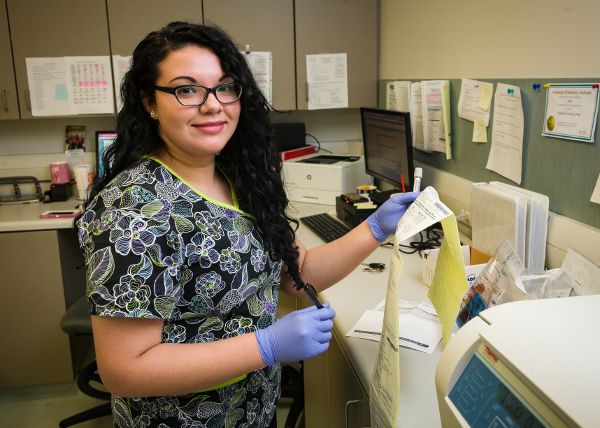Overview
Myeloproliferative disorders (MPD) are diseases of the blood which disrupt the process of blood cell production and development, leading to abnormally high counts of certain blood cells. Some MPD patients develop acute myeloid leukemia (AML), a type of cancer of the bone marrow. Myelodysplastic syndromes are a related group of disorders.
Bone marrow, the tissue found in the center of large bones, contains blood-forming cells which manufacture red blood cells, white blood cells, and platelets. Different types of MPD affect this process of blood cell production and development in different ways.
Types of myeloproliferative disorders include:
- Primary myelofibrosis (PMF): red blood cells and certain white blood cells mature abnormally and fibers inside bone marrow thicken and scar, leading to anemia (decreased red blood cell production).
- Polycythemia vera (PV): red blood cells are overproduced and build up in the blood, and the spleen may swell.
- Essential thrombocythemia (ET): platelets are overproduced, slowing down blood flow.
- Chronic eosinophilic leukemia or hypereosinophilic syndrome (HES): eosinophils (a type of white blood cell) are overproduced, causing itching and swelling.
- Systemic mastocytosis (SM): mast cells (a type of white blood cell) accumulate in the body, affecting the spleen, bone marrow, liver, or small intestine.
Symptoms
Early-stage MPD may not cause symptoms, and symptoms may vary based on the type of disorder, but these may include:
- Headache
- Fatigue
- Shortness of breath
- Easy bruising or bleeding
- Red spots under the skin called petechiae
- Unintended weight loss
- Night sweats
- Fever
- Pressure or swelling of the spleen (below the ribs on the left side)
- Chest pain
- Unexplained itching all over the body
- Swelling of the extremities
It is important to note that the symptoms above can be caused by a number of other non-cancerous causes, but it is important to be checked by a medical professional to improve the chances of effective treatment.
Risk Factors
Research has not found strong links to specific risk factors or discovered the causes of MPD. A few factors of concern include: radiation exposure, exposure to toxic chemicals including benzene and certain pesticides, and family history in rare cases.
Acquired (meaning not inherited) gene mutations may be a factor in many cases of MPD, but the causes and significance of these mutations are not known.
Prevention
The causes of myeloproliferative disorders are not known, so it is difficult to determine what can be done to avoid MPD. There may be some things you can do to lower your risk of MPD:
- Avoid exposure to benzene and other known carcinogenic chemicals.
- Avoid exposure to high levels of radiation.
Diagnosis
While some myeloproliferative disorders are found after symptoms appear, many people are diagnosed based on the results of blood tests performed for other reasons. If there is a suspicion of MPD, additional lab testing will be performed. This will include a complete blood count (CBC), and may include other blood tests to rule out alternative diagnoses.
A bone marrow aspiration and biopsy is usually required to confirm a diagnosis of MPD. In the aspiration procedure, a sample of bone marrow is removed from the hip bone under local anesthetic via a thin needle. The biopsy procedure involves removal of a small piece of bone as well as the marrow, with a slightly larger needle; it often follows a bone marrow aspiration. A pathologist or hematologist will then examine the samples for abnormalities to determine diagnosis.
Other tests may be used in addition to the diagnostic tools discussed above.
Treatment
The treatment plan will depend on the stage of the disorder, as well as other factors. Our doctors will work closely with you and your family determine the best treatment plan for you. Options for treatment could include:
- Medications
- Blood transfusions
- Growth factors
- Radiation therapy
- Phlebotomy (drawing blood)
Your doctor may decide more than one of these treatment options will be in your best interest.







